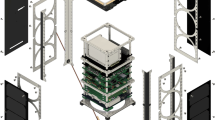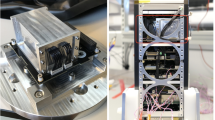Abstract.
Among the present and near future missions aimed at detecting and studying Gamma Ray Bursts, the Wide Field X-Ray Monitor (WXM, [1]) on board HETE-2 and SuperAGILE ([2]) on board AGILE have very similar characteristics. We applied the same simulation tools to these two experiments and compared their expected performances, with a particular focus on the expected event rates and the instruments’ localizing capabilities. Both experiments use the one-dimensional coded aperture technique to localize sources, and both have several detectors equipped with masks that encode the field of view in perpendicular directions. The two-dimensional position of a detected source can be determined by crossing the two one-dimensional positions.
Similar content being viewed by others
Author information
Authors and Affiliations
Editor information
Rights and permissions
About this paper
Cite this paper
Preger, B., Fenimore, E.E., Costa, E. Event Rates in SuperAGILE and HETE. In: Costa, E., Frontera, F., Hjorth, J. (eds) Gamma-Ray Bursts in the Afterglow Era. ESO ASTROPHYSICS SYMPOSIA. Springer, Berlin, Heidelberg. https://doi.org/10.1007/10853853_116
Download citation
DOI: https://doi.org/10.1007/10853853_116
Published:
Publisher Name: Springer, Berlin, Heidelberg
Print ISBN: 978-3-540-42771-1
Online ISBN: 978-3-540-45505-9
eBook Packages: Springer Book Archive




